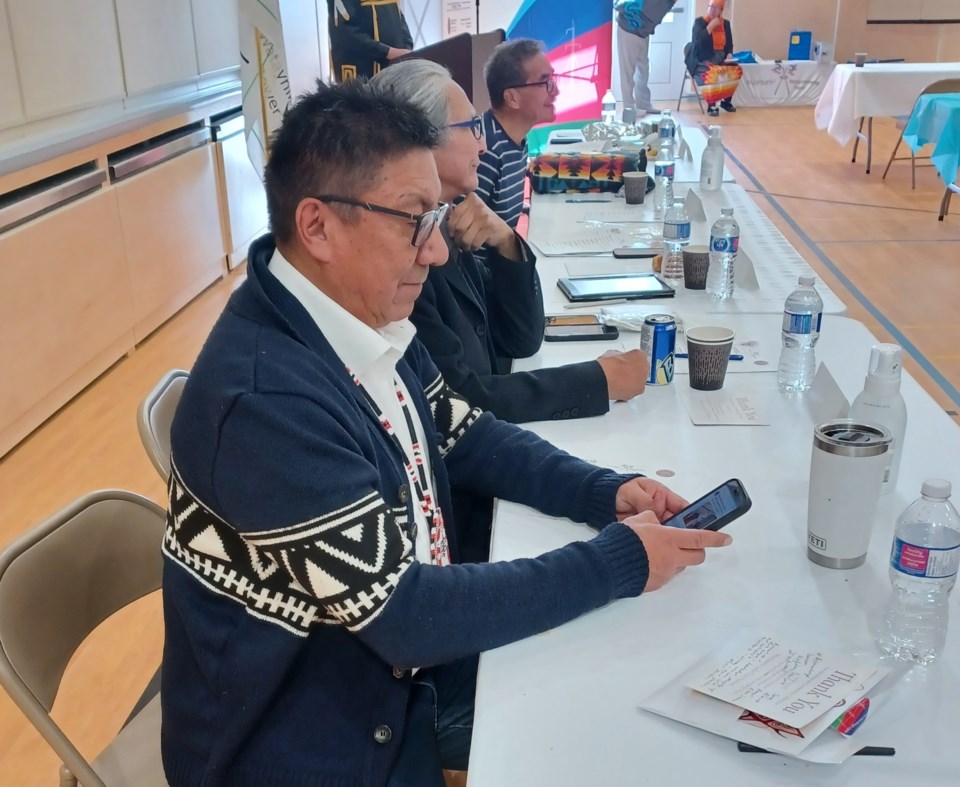WUNNUMIN LAKE — Until recently, this remote First Nation community was among more than 20 in Northwestern Ontario not connected to the Ontario power grid.
That ended a few weeks ago, and now the 600 or so people who live here can enjoy reliable electricity that isn’t generated by burning enormous volumes of a fossil fuel.
On Monday at Wunnumin Lake’s new John George Martin Memorial School, they celebrated becoming the seventh First Nation connected by Wataynikaneyap Power to the provincial grid.
Outages were frequent under the old system due to mechanical failure and other reasons, according to Wunnumin Lake Chief Sam Mamakwa.
Power outages are common in First Nations with diesel generators because their electricity supply is teetering along maximum capacity, according to Wataynikaneyap Power’s website.
Getting a more reliable source of electricity was a longstanding goal and ambition of the First Nation, and getting a place on the Wataynikaneyap Transmission Project line is a true “milestone” moment for the community, he said.
“We are happy that we have a system that we can use in the coming years,” Mamakwa said at the Wunnumin Lake hydro substation, where First Nation leaders, Wataynikaneyap Power officials and others gathered in the morning before celebrations at the school.
“It’s been a long, long process,” said former chief Simon Winnepetonga, who led the blessing and prayer at the substation as well as the opening and closing prayer in the school gymnasium later in the day.
“It’s a pretty special day for Wunnumin Lake,” said Nishnawbe Aski Nation Grand Chief Alvin Fiddler. “As the elder Simon Winnepetonga said, they’ve waited a long time for this and today is certainly a milestone.
“I’m sure they’re looking forward to utilizing more power for themselves, plugging in their Christmas lights … So it’s pretty special, for sure.”
Located more than 500 kilometres north of Thunder Bay, Wunnumin Lake First Nation is accessible by ice road for about six weeks in winter.
That’s when the First Nation would try to truck in as much diesel as possible every year, as the only other way to get it there was by plane, and plane shipment is rather expensive.
Trucking diesel into the reserve by winter road “was very, very risky” and burning diesel for electricity “was very, very expensive,” said former Wunnumin Lake chief Rod Winnepetonga.
“I’m very happy today,” he added. “I thought I’d never see this special day.”
Kasabonika Lake, Wawakapewin, North Caribou Lake and Bearskin Lake First Nations got connected to the Ontario power grid earlier this year by Wataynikaneyap Power, which is 51 per cent owned by 24 First Nations in partnership with Fortis Inc. (an international utilities company headquartered in St. John’s, N.L.) and other private investors.
Kingfisher Lake First Nation got “energized” by the transmission system in November 2022. Pikangikum First Nation got linked to the grid in December 2018.
The $1.9-billion, 1,800 km Wataynikaneyap Power Transmission Line will ultimately connect 17 remote communities to the grid, thus removing their reliance on diesel-generated electricity.
